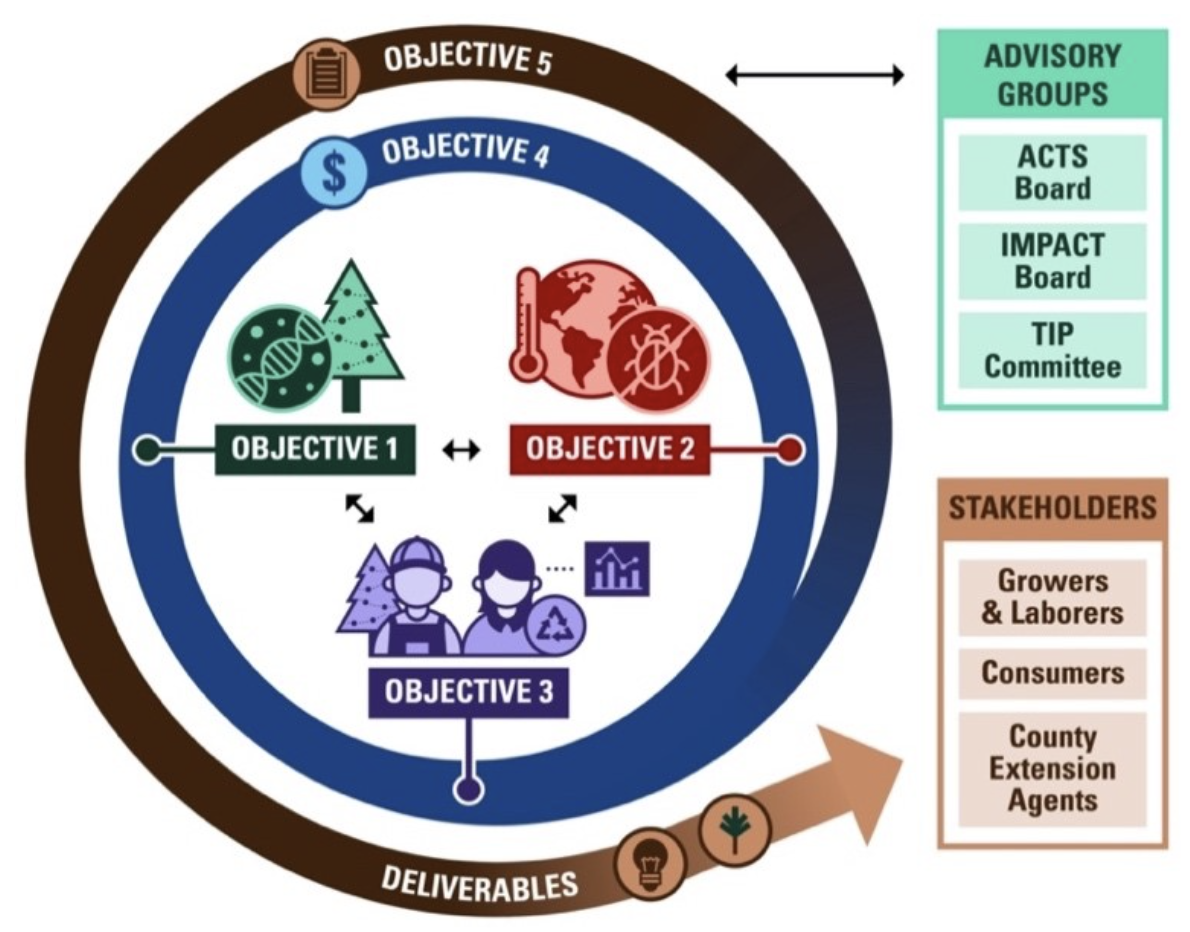Plants produce a wealth of volatile organic compounds (VOCs) that contribute to pollinator attraction, interorganismal interactions and defense. We perceive these VOCs as fruit and flower scents and aromas. To better understand the diversity of terpenoids to aroma and environmental interactions and provide resources for breeders and growers toward improving crop quality and resilience traits, we currently investigate terpenoid aroma metabolism in strawberry and Christmas trees.

If you would like to read more:
[coming soon]
This research has been generously supported by:

A GIFT SEED: Accelerated Genetic Improvement of Fir Through Sequencing, Economics, Extension, & Diagnostics
Many types of conifers are used as Christmas trees, but true firs (Abies spp.) are the most popular, comprising 66% of all sales. The most popular Christmas trees are Fraser fir (Abies fraseri) and noble fir (A. procera) which account for half of all real trees sold as part of the $2.5 billion annual real Christmas tree industry. However, warming climates threaten productivity of Fraser and noble fir in the US. This project aims to genetically improve fir species by (1) enhancing climate resilience; (2) enhance disease and pest resistance; and (4) develop new technologies to reduce production costs, improve safety, reduce labor, and improve the environmental benefits of real trees through sustainability.

If you would like to read more:
- Zerbe P, Chiang A, Yuen M, Hamberger B, Hamberger B, Draper JA, Britton R, Bohlmann J (2012) Bifunctional cis-abienol synthase from Abies balsamea discovered by transcriptome sequencing and its implications for diterpenoid fragrance production. J Biol Chem 287:12121-31. [Link]
- Hall DE, Zerbe P, Jancsik S, Quesada AL, Dullat H, Madilao LL, Yuen M, Bohlmann J (2013) Evolution of conifer diterpene synthases: diterpene resin acid biosynthesis in lodgepole pine and jack pine involves monofunctional and bifunctional diterpene synthases. Plant Physiol. 161:600-16. [Link]
- Zerbe P, Bohlmann J (2015) Enzymes for synthetic biology of ambroxide-related diterpenoid fragrance compounds. Adv Biochem Eng Biotechnol. 148:427-47. [link]
This research has been generously supported by:

